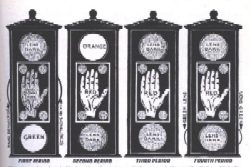 New York City is known for its jaywalking. It may not be the jaywalking capitol of the world, but it has been know to have many jaywalking deaths. That situation inspired the city to install the first walk/don’t walk signs in history on February 5, 1952. Not every inspiration or invention brings change for the better, and I don’t think that all regulation is a good thing, but when it comes to a meeting between a car and a pedestrian, the pedestrian will lose every time. The use of these pedestrian traffic signs are still used today in order to make streets safer.
New York City is known for its jaywalking. It may not be the jaywalking capitol of the world, but it has been know to have many jaywalking deaths. That situation inspired the city to install the first walk/don’t walk signs in history on February 5, 1952. Not every inspiration or invention brings change for the better, and I don’t think that all regulation is a good thing, but when it comes to a meeting between a car and a pedestrian, the pedestrian will lose every time. The use of these pedestrian traffic signs are still used today in order to make streets safer.
Walk/Don’t Walk signs are just a normal fixture these days. We use them at every busy intersection, and don’t give them a second thought…unless they seem to be taking too long to change. Then we feel annoyed, or even cross against the light, which is still jaywalking, even though we are at a crosswalk. While it isn’t uncommon to be annoyed at the wait to cross the street, it can be nice to have that assistance when there is a lot of traffic.
The walk/don’t walk signs have changed over the years, from the very basic style installed in New York City in 1952, to the more modern ones that tell you when to walk or to wait. These are of course designed with the visually impaired person in mind. Our society have become more aware of the needs of the handicapped, and the voice control feature is truly vital.
Strangely, the Walk/Don’t Walk sign has not always been an apostrophe in the word “don’t.” When the first don’t walk signs were installed in New York, they didn’t have an apostrophe between the letters n and t, which makes that the sign was written as ‘dont walk’. It is thought that these signs lack an apostrophe, because it made the stop command more urgent. Another theory about why the signs missed the apostrophe was because  they were made from a single-piece neon light, which made it difficult to add the apostrophe. I don’t suppose we will ever know why, for sure.
they were made from a single-piece neon light, which made it difficult to add the apostrophe. I don’t suppose we will ever know why, for sure.
Between 1999 and 2000, it was decided that the traditional ‘walk’ and ‘don’t walk’ signs should be phased out, because they were difficult to understand for people who didn’t speak English. Many pedestrian accidents occurred with tourists in New York and therefore the city decided to change the traditional sign into a simple stick figure of a walking man when green, and a raised hand when red. Whichever type of walk/don’t walk signs you have in your town, you can be sure that the signs have saved lives.

 A few months after my husband, Bob’s uncle Frank Knox passed away, I was having an email conversation with Frank’s son, Greg, and we were discussing some of Frank’s time in the military, when Greg told me about his dad’s time in the Civilian Conservation Corps (CCC). The CCC was a public work relief program that operated from 1933 to 1942 in the United States for unemployed, unmarried men. Originally for young men ages 18–25, it was eventually expanded to ages 17–28. Right after Frank graduated from high school in 1937, which was in the middle of the Great Depression, he went to work for a local rancher. He got the job because of his experience in driving a team of horses on a mowing machine and a dump rake, which he learned helping out on his brother, Robert Knox’s sheep ranch. The farmer saw the value in hiring this young man to help with the alfalfa harvest of that season.
A few months after my husband, Bob’s uncle Frank Knox passed away, I was having an email conversation with Frank’s son, Greg, and we were discussing some of Frank’s time in the military, when Greg told me about his dad’s time in the Civilian Conservation Corps (CCC). The CCC was a public work relief program that operated from 1933 to 1942 in the United States for unemployed, unmarried men. Originally for young men ages 18–25, it was eventually expanded to ages 17–28. Right after Frank graduated from high school in 1937, which was in the middle of the Great Depression, he went to work for a local rancher. He got the job because of his experience in driving a team of horses on a mowing machine and a dump rake, which he learned helping out on his brother, Robert Knox’s sheep ranch. The farmer saw the value in hiring this young man to help with the alfalfa harvest of that season.
Nevertheless, the job was obviously temporary, it was a relief when on July 1, 1937, Frank made the decision to join the CCCs. Frank says that the decision to join the CCCs was purely out of desperation. Frank received his notice and was ordered to train in Miles City, Montana. Frank was stationed in Haugen, Montana attached to the 956 Company which was working in conjunction with the Forest Service. The site was Camp F9 with the forest service. Frank spent 18 months with this company, but was allowed to take 9 months leave in the middle of that service, though he never quite knew how that had been arranged. He went to his Freshman year in college, and then returned to the CCC to complete his 18 months of service. In the CCCs, Frank would make $30 a month, $25 of which would go home to help the family. Because he also received room and board, the $5 spending money he had a month was enough. Franks says he didn’t want for anything, and in fact, gained 15 pounds in those first months. Frank fought several forest fires in his time in the CCCs, but he knew that fire fighting was really not for him. Frank went to work in the kitchen, and then later applied for and received the position of assistant educator, and he was the editor of The Mountain Chieftain the camp newspaper. Frank also taught the Agriculture class to 8th grade boys in the area.
When Frank was released from the CCCs, he moved back to his parents home, now in Ellensburg, Washington, where he began his college career at Central Washington College of Education. Frank didn’t know that he was a 
 born teacher, and so he went to college and earned a Bachelors Degree in electrical engineering from Washington State College, now Washington State University, in the spring of 1948. He had a job lined up with the Clark County Public Utility District in Vancouver, Washington, but the Vanport Flood on the lower Columbia River wiped out the new post-war housing in the Portland area, causing the job offer to be withdrawn. Frank was offered an instructor’s position in the electrical engineering department at Washington State College, and thus began his 37 year career at Washington State University. Frank was an amazing man, and very smart. It was a pleasure knowing him. Today would have been Great Uncle Frank’s 99th birthday. Happy birthday in Heaven Uncle Frank. We love and miss you very much.
born teacher, and so he went to college and earned a Bachelors Degree in electrical engineering from Washington State College, now Washington State University, in the spring of 1948. He had a job lined up with the Clark County Public Utility District in Vancouver, Washington, but the Vanport Flood on the lower Columbia River wiped out the new post-war housing in the Portland area, causing the job offer to be withdrawn. Frank was offered an instructor’s position in the electrical engineering department at Washington State College, and thus began his 37 year career at Washington State University. Frank was an amazing man, and very smart. It was a pleasure knowing him. Today would have been Great Uncle Frank’s 99th birthday. Happy birthday in Heaven Uncle Frank. We love and miss you very much.
 My nephew, Dave Chase is a good natured, and often funny guy. He likes a good joke and in general comedic situations. That is not what one would expect from him when you first meet him, however, because he seems a bit reserved…until you get to know him. Dave is the kind of man you like immediately, because he has a pleasing personality. He’s easy to talk to and intelligent, making conversations with him quite interesting. Dave has been a chief reservoir engineer, working for the Bureau of Land Management for a number of years, and in fact, knew my Aunt Sandy Pattan before he knew his future wife, my niece, Toni. Aunt Sandy was a little surprised when Dave told her who he was dating, and Dave was equally surprised when Aunt Sandy told him that Toni was her grandniece. They were both surprised.
My nephew, Dave Chase is a good natured, and often funny guy. He likes a good joke and in general comedic situations. That is not what one would expect from him when you first meet him, however, because he seems a bit reserved…until you get to know him. Dave is the kind of man you like immediately, because he has a pleasing personality. He’s easy to talk to and intelligent, making conversations with him quite interesting. Dave has been a chief reservoir engineer, working for the Bureau of Land Management for a number of years, and in fact, knew my Aunt Sandy Pattan before he knew his future wife, my niece, Toni. Aunt Sandy was a little surprised when Dave told her who he was dating, and Dave was equally surprised when Aunt Sandy told him that Toni was her grandniece. They were both surprised.

Dave is all about family. From the moment he met Toni, he has worked hard at bonding with her son, James Renville, and these days they are good friends. James has a dad, but he also has a great step-dad, and they have a great time. When he married my niece, Dave inherited a large extended family. Toni has 4 siblings, and there are a number of nieces, nephews, grand nieces and a grand nephew. If you ask the kids about their Uncle Dave Chase, they will all tell you the same thing…”He loves his nieces and nephews.” Now to have one child say that is one thing, but when the consensus is in total agreement, you know that it is very true. Dave is generous and kind, and he is a lot of fun to be around. The kids all love him, and Dave feels the same way.

Dave is very athletic. He loves to play basketball, and I’m told that Dave runs circles around the younger crowd. Dave keeps himself in great shape, and you know that the work you are doing is working, when a kid says that you can run circles around the kids. Recently, Dave, like many government workers, spent a month on furlough because of the government shutdown, but Dave didn’t just sit around sulking, he took the opportunity to go skiing in Jackson. Dave loves to ski, and he had a great time. Nevertheless, he was glad to get back to work, because Dave isn’t the kind of guy to just sit around. He likes to stay busy. Today is Dave’s birthday. Happy birthday Dave!! Have a great day!! We love you!!
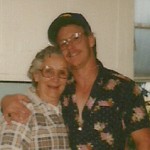
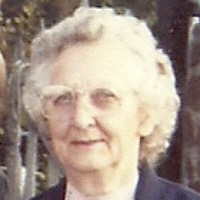 Funny thing about Groundhog Day, it has a way of sneaking up on you. It seems like the older I get, the more I feel like winter lasts an awfully long time. So, when Groundhog Day finally rolls around, and spring starts to be on everyone’s mind. Winter is emotionally wearing and leaves us weary…especially as it nears the end. I always greet Groundhog Day with mixed emotions, waiting to see if Punxsutawney Phil sees his shadow or not. Oh, I know that Punxsutawney Phil is only accurate about 39% of the time, but it gives me hope each year that he predicts an early spring. It’s silly, I know, but it’s fun to anticipate anyway.
Funny thing about Groundhog Day, it has a way of sneaking up on you. It seems like the older I get, the more I feel like winter lasts an awfully long time. So, when Groundhog Day finally rolls around, and spring starts to be on everyone’s mind. Winter is emotionally wearing and leaves us weary…especially as it nears the end. I always greet Groundhog Day with mixed emotions, waiting to see if Punxsutawney Phil sees his shadow or not. Oh, I know that Punxsutawney Phil is only accurate about 39% of the time, but it gives me hope each year that he predicts an early spring. It’s silly, I know, but it’s fun to anticipate anyway.
My husband’s grandmother, Vina Hein always had another reason to look forward to Groundhog Day…her birthday. If you took it seriously, the measure of “happy” could depend on whether or not a rodent in Pennsylvania saw his shadow or not, and of course, how much you liked winter. To be honest, I don’t remember if Grandma liked winter or not, and maybe as a child, she loved it, but I rather doubt that winter’s draw was as strong in her as she grew older. That seems to be the way of it. The older we get, the less we like the bitter cold of winter…at least if we have to be out in it. Nevertheless, I have a pretty good idea that Grandma rather liked spring better, because living on a ranch, spring brought so much new life. From baby calves to new chickens, to baby carrots, life begins anew in the spring.


I suppose that is why I like spring, and the Groundhog Day announcement too. Spring and the summer that follows it, are my favorite times of year. The birds chirping and the flowers blooming, remind me that with every winter there lies beneath the snow, the promise of spring and the renewal of life on Earth. Maybe that is why Grandma liked her birthday too. Today would have been Grandma Hein’s 110th birthday. Happy birthday in Heaven Grandma Hein. We love and miss you very much.
 I was a born in the early days of the Vietnam War, so much of those early war years went unnoticed…by me anyway. The war official began on November 1, 1955, but there was much turmoil in the years leading up to the actual beginning of the war. It was an unpopular war, and probably the biggest news in the United States was the many protests against the war.
I was a born in the early days of the Vietnam War, so much of those early war years went unnoticed…by me anyway. The war official began on November 1, 1955, but there was much turmoil in the years leading up to the actual beginning of the war. It was an unpopular war, and probably the biggest news in the United States was the many protests against the war.
Nevertheless, there were some big operations that took place in the Vietnam War years. One such operation was Operation Plan (Oplan) 34A, and it was initiated on February 1, 1964, by the United States and the South Vietnamese. The plan called for raids by South Vietnamese commandos, operating under American orders, against North Vietnamese coastal and island installations. In this operation, the American forces were not directly involved in the actual raids, but United States Navy ships were on station to conduct electronic surveillance and monitor North Vietnamese defense responses under another program called Operation De Soto.
The Oplan 34A attacks played a major role in events that would eventually lead to what became known as the Gulf of Tonkin Incident. On August 2, 1964, North Vietnamese patrol boats, in response to an Oplan 34A attack by South Vietnamese gunboats against the North Vietnamese island of Hon Me, attacked the destroyer USS  Maddox. The Maddox was conducting a De Soto mission in the area. Then, just two days after the first attack, there was another incident, but that attack remains unclear. The Maddox, joined by destroyer USS C. Turner Joy, engaged what were thought to be more attacking North Vietnamese patrol boats.
Maddox. The Maddox was conducting a De Soto mission in the area. Then, just two days after the first attack, there was another incident, but that attack remains unclear. The Maddox, joined by destroyer USS C. Turner Joy, engaged what were thought to be more attacking North Vietnamese patrol boats.
There is some question as to whether or not the second attack actually happened, but the incident provided the rationale for retaliatory air attacks against the North Vietnamese and the subsequent Tonkin Gulf Resolution. That became the basis for the initial escalation of the war in Vietnam, and ultimately brought about the insertion of United States combat troops into the area.
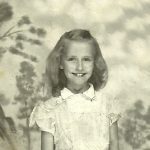
 Most people have heard of “flesh-eating infections” caused by group A Streptococcus, scientifically known as Streptococcus Pyogenes. These days, these are the big headline grabbing diseases, but 150 years ago, the biggest headline grabber was Scarlet Fever. Whenever people heard of this disease, their blood ran cold. During the Victorian era in the United States and Europe. Scarlet fever killed United States children in the 1920s, 1930s and 1940s. Of the children who contracted the disease, thousands died.
Most people have heard of “flesh-eating infections” caused by group A Streptococcus, scientifically known as Streptococcus Pyogenes. These days, these are the big headline grabbing diseases, but 150 years ago, the biggest headline grabber was Scarlet Fever. Whenever people heard of this disease, their blood ran cold. During the Victorian era in the United States and Europe. Scarlet fever killed United States children in the 1920s, 1930s and 1940s. Of the children who contracted the disease, thousands died.
It was in about 1949 that my mother, Collene Byer Spencer contracted the disease. It was still a terrifying situation for the family. My grandparents had nine children, and having one get Scarlet Fever put the rest of the children in danger too. Scarlet Fever can cause long-term complications as a result of Scarlet Fever include kidney disease, rheumatic heart disease, and arthritis. Following my mom’s bout with Scarlet Fever, she developed a heart murmur that she did not have prior to the disease. She was sick a long time, and in reality, they almost lost her. She spent a long period of time delirious from the fever, barely knowing anything that was going on around her. Even after she recovered, it would be a number of years before she had much strength. Her hearing suffered from the Scarlet Fever too. She could hear, but she had such a ringing in her ears that it made hearing the words being spoken to her very difficult. I have not heard that any of her siblings caught the disease, so I think they must have quarantined mom from the others during the disease.
The bacterial infection that causes Scarlet Fever often starts with strep throat and skin infections. Certain strep  bacteria produce a toxin that can cause a red rash—the “scarlet” of scarlet fever. Scarlet fever is usually a mild illness that most commonly affects children between 5 and 15 years old…these days. The streptococcus bacteria that caused strep throat infections were genetically different than the strains around today, and they could cause children to become very sick and die. In years gone by, the schools implemented throat cultures to detect strep throat before it could develop into Scarlet Fever. A few years back, they stopped that because they thought it was wiped out. As a mom who did throat cultures, that makes me nervous. Such a simple test to protect from such an awful disease, and such a simple medicine…Penicillin to get rid of it, was a no brainer.
bacteria produce a toxin that can cause a red rash—the “scarlet” of scarlet fever. Scarlet fever is usually a mild illness that most commonly affects children between 5 and 15 years old…these days. The streptococcus bacteria that caused strep throat infections were genetically different than the strains around today, and they could cause children to become very sick and die. In years gone by, the schools implemented throat cultures to detect strep throat before it could develop into Scarlet Fever. A few years back, they stopped that because they thought it was wiped out. As a mom who did throat cultures, that makes me nervous. Such a simple test to protect from such an awful disease, and such a simple medicine…Penicillin to get rid of it, was a no brainer.

 My nephew, Chris Iverson is a man who largely thinks like me. We agree on so many points, from politics to leisure time. I always like to talk to a person with a logical mind, and that is exactly what Chris has. At the risk of upsetting the “please no more politics” people among my readers, I must say that Chris is a conservative, with a level head, who isn’t fooled by the Liberal media. That can be refreshing when so many of the people you hear from around you are the polar opposite of that. Chris understands that the liberal politicians ideas simply will not work, and will break this nation. Chris gets that.
My nephew, Chris Iverson is a man who largely thinks like me. We agree on so many points, from politics to leisure time. I always like to talk to a person with a logical mind, and that is exactly what Chris has. At the risk of upsetting the “please no more politics” people among my readers, I must say that Chris is a conservative, with a level head, who isn’t fooled by the Liberal media. That can be refreshing when so many of the people you hear from around you are the polar opposite of that. Chris understands that the liberal politicians ideas simply will not work, and will break this nation. Chris gets that.
Nevertheless, that is not all Chris is about. A daddy of two children, Chris, along with his wife, Cassie, takes a hands on approach to parenting. Their son, Lucas needs extra help, because he was born with Down’s Syndrome, but that has never stopped Chris and Cassie from helping Lucas to be the best person he can be…even if that happens to be Batman. They are hands on with his needs, and work hard to help him perform as normally as possible. Their daughter, Zoey also helps her big brother to learn new things. She is one of his biggest fans.
Chris makes sure that his children get to spend as much time as possible with family, knowing that some of those grandparents and great grandparents may not be around for much longer. Taking the kids for visits is a great way to let them get to know their family, especially when they don’t all live in the same town. Much of the family also loves to go camping, so they get to see them there too.
The family loves the outdoors, and Chris gets them outside as much as possible. Chris loves to hike, camp, and 
 fish, and he is teaching his children to love those things too. Of course, living in Powell, Wyoming, they have a more limited season to do some of the outdoor things they like, but whenever possible, they are out there enjoying nature. I think that Chris’ outdoor lifestyle is a great way to raise the kids, and keep them strong with exercise, something which is very important for Lucas, for whom these things don’t always come easy. Chris and Cassie are great parents, and their children are very blessed to have them. Today is Chris’ birthday. Happy birthday Chris!! Have a great day!! We love you!!
fish, and he is teaching his children to love those things too. Of course, living in Powell, Wyoming, they have a more limited season to do some of the outdoor things they like, but whenever possible, they are out there enjoying nature. I think that Chris’ outdoor lifestyle is a great way to raise the kids, and keep them strong with exercise, something which is very important for Lucas, for whom these things don’t always come easy. Chris and Cassie are great parents, and their children are very blessed to have them. Today is Chris’ birthday. Happy birthday Chris!! Have a great day!! We love you!!

 On January 30, 1933, President Hindenburg appointed Adolf Hitler chancellor of Germany. It wasn’t because of any election, but rather by a constitutionally questionable deal dreamed up by a small group of conservative German politicians who had given up on parliamentary rule. Little did they know that they were party to appointing one of the worst dictators in history. Their attempt to return Germany to conservative authoritarian rule, backfired miserably when, within two years, Hitler and the Nazis outmaneuvered Germany’s conservative politicians to consolidate a radical Nazi dictatorship that was completely subordinate to Hitler’s personal will. I wonder if President Hindenburg wished he had never met Hitler, much less appointed him to be chancellor.
On January 30, 1933, President Hindenburg appointed Adolf Hitler chancellor of Germany. It wasn’t because of any election, but rather by a constitutionally questionable deal dreamed up by a small group of conservative German politicians who had given up on parliamentary rule. Little did they know that they were party to appointing one of the worst dictators in history. Their attempt to return Germany to conservative authoritarian rule, backfired miserably when, within two years, Hitler and the Nazis outmaneuvered Germany’s conservative politicians to consolidate a radical Nazi dictatorship that was completely subordinate to Hitler’s personal will. I wonder if President Hindenburg wished he had never met Hitler, much less appointed him to be chancellor.
Within days of taking power, the Nazis called for Germany to boycott all Jewish businesses. This unexpected anti-Jewish propaganda was the first of many. Hitler hated the Jewish people. He had no reason for his hatred. The Jewish people had done nothing to warrant Hitler’s hatred and rage. One theory is that Hitler had decided that the Jewish people were an inferior race. That is not such a new thought. It had happened before, to the African slaves in history, who had often been referred to as mud people. The Jews, as with the slaves, were treated horribly.
Another reason Hitler hated the Jewish people, was because following Germany’s loss of World War I, Hitler blamed the Jews and the communists living in Germany. He felt that they were part of a huge conspiracy against the German military. He believed that had it not been for their interference, Britain and the allies would have lost the war. Another possible reason for Hitler’s hatred of the Jews was probably jealousy. After World War I, he saw that a lot of Germans were without jobs and struggling. Instead of looking at the war as the root cause of the economic problem, he blamed the Jews for the sorry state of affairs. Because Adolf Hitler was truly insane, I’m sure that his reason to hate the Jewish people made sense to him, but the reality is that his insane mind was the only place that it made sense.
I’m not sure how he managed to get so many people to agree with is ideas, but somehow he did, and when he decided that all Jewish shops were to be boycotted, and stationed his SA Storm Troopers near the shops to 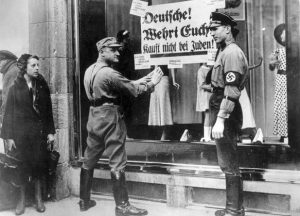
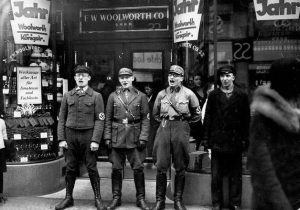
ensure that his plans were carried out, they did as they were told. It wasn’t long after the boycotting of the shops that Hitler took things to the next level, and began hauling the Jewish people to the death camps. As long as he was alive, there was no end to his hatred, and that is definitely not what President Hindenburg or the conservative German politicians had in mind, and I’m sure they wished they had never done it.

 I never thought that I would have much interest in how a guitar was made, but my grandson, Caalab Royce is interested in building guitars, so of course, I became interested too. You do that with your children and grandchildren. Caalab showed me pictures of the guitars he wanted to make, and told me that he could buy a kit to build one, that would include all the parts. I truly believe there will come a day that he will build a guitar, and it will be beautiful, and sound beautiful. I might be
I never thought that I would have much interest in how a guitar was made, but my grandson, Caalab Royce is interested in building guitars, so of course, I became interested too. You do that with your children and grandchildren. Caalab showed me pictures of the guitars he wanted to make, and told me that he could buy a kit to build one, that would include all the parts. I truly believe there will come a day that he will build a guitar, and it will be beautiful, and sound beautiful. I might be  biased, but if my grandson makes it, I know it will be perfect.
biased, but if my grandson makes it, I know it will be perfect.
Recently, I stumbled across an article about a musical wood. That caught my attention. I wondered how wood could be musical. Of course, it couldn’t, as I already knew and went on to find out, but the Sitka Spruce tree is, nevertheless, the wood used for the vast majority of acoustic guitar, piano, violin, and other musical-instrument soundboards. That told me that the wood must have some kind of musical importance. I found out that the wood has excellent acoustic properties. The wood is light, soft, and yet, relatively strong and flexible. The Sitka Spruce is also used for general construction, ship building, and plywood.
Found mostly in Southeast Alaskan forests, the Sitka Spruce is being harvested at such a rate that the end of the instrument-quality supply is in sight. That doesn’t mean that the Sitka Spruce was becoming extinct, but it takes time to grow to some size, so the instrument-quality is becoming less available. The population of the Sitka Spruce is stable at this point, and it grows in Alaska, as well as Washington, Oregon, and California, 
 meaning that there is plenty of places to re-seed this important tree. It really is just a matter of waiting for the growth, and when you are talking about a tree, it’s very different than a puppy. You are talking years for a tree. A Sitka Spruce grows to around 88 feet in height after 50 years, to 157 feet after 100 years. That means that by the time the trees grow to usable size, the guitar builders of today will be long gone, so a new generation will be the ones to use the new growth. I hope that Caalab will have a chance to build a guitar out of Sitka Spruce before the wood is no longer available.
meaning that there is plenty of places to re-seed this important tree. It really is just a matter of waiting for the growth, and when you are talking about a tree, it’s very different than a puppy. You are talking years for a tree. A Sitka Spruce grows to around 88 feet in height after 50 years, to 157 feet after 100 years. That means that by the time the trees grow to usable size, the guitar builders of today will be long gone, so a new generation will be the ones to use the new growth. I hope that Caalab will have a chance to build a guitar out of Sitka Spruce before the wood is no longer available.
 Yesterday was National Holocaust Remembrance Day, I started thinking about all that happened to those poor victims of the Holocaust, and because yesterday was the day that the prisoners of Auschwitz were liberated, I began to contemplate what it must have been like for them as the exited that horrible camp. My guess is that their first thought was one of thankfulness that they had actually come out alive. Going into Auschwitz, I’m sure many had hopes that it would be just a camp for prisoners of war, and that they might be treated fairly, but as their friends began to disappear, never to return, I’m sure they knew to horrific truth. This was not a prisoner of war camp, is was a death camp, and the whole goal was to experiment, torture, and kill the prisoners. The people who worked there, were given authority to do as they pleased.
Yesterday was National Holocaust Remembrance Day, I started thinking about all that happened to those poor victims of the Holocaust, and because yesterday was the day that the prisoners of Auschwitz were liberated, I began to contemplate what it must have been like for them as the exited that horrible camp. My guess is that their first thought was one of thankfulness that they had actually come out alive. Going into Auschwitz, I’m sure many had hopes that it would be just a camp for prisoners of war, and that they might be treated fairly, but as their friends began to disappear, never to return, I’m sure they knew to horrific truth. This was not a prisoner of war camp, is was a death camp, and the whole goal was to experiment, torture, and kill the prisoners. The people who worked there, were given authority to do as they pleased.
As the prisoners were taken out of the camp, I’m sure there was a mixture of feelings…relief and guilt. Relief because they had lived through one of the worst atrocities in history…and guilt, because they had lived through one of the worst atrocities in history…while so many others did not. The guilt would have been horrible. Parents who made it out, while their children did not; children who made it out, while their parents did not. They were free, but homeless. They were weary, and many were sick or dying of starvation. The experiments performed on them probably left irreparable damage to their bodies and minds. I’m sure their thoughts were racing as the walked away from the worst time in their lives.
Their futures were uncertain. They didn’t know if they would be accepted in their home country, or if they 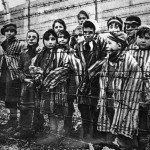 would have to immigrate to another country to find real freedom. And I’m sure that the worst thought was the possibility that it could happen again. Once something like the holocaust happened to a people, how could they possibly trust another nation again, and yet they would, because as horrible as the Holocaust was, there were many good people, and many good nations who were completely against the atrocities that happen during those years…people and nations who would never forget what happened. The Holocaust was an atrocity beyond the ability of most human beings ability to wrap their minds around, but it was something that was impossible to forget, for those who lived it. The horror they suffered would haunt them for the rest of their lives. It would be impossible to remove the nightmare they lived from their memory.
would have to immigrate to another country to find real freedom. And I’m sure that the worst thought was the possibility that it could happen again. Once something like the holocaust happened to a people, how could they possibly trust another nation again, and yet they would, because as horrible as the Holocaust was, there were many good people, and many good nations who were completely against the atrocities that happen during those years…people and nations who would never forget what happened. The Holocaust was an atrocity beyond the ability of most human beings ability to wrap their minds around, but it was something that was impossible to forget, for those who lived it. The horror they suffered would haunt them for the rest of their lives. It would be impossible to remove the nightmare they lived from their memory.

